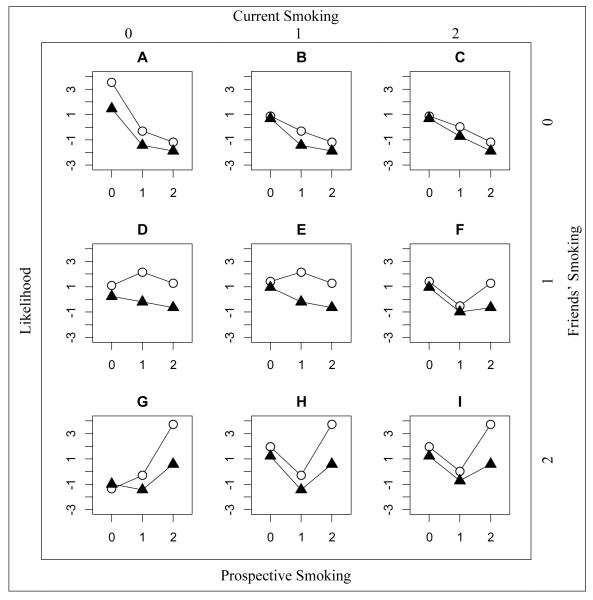Fig 5.
Contribution of linear, quadratic, and total similarity effects to predicted likelihood of adopting each level of smoking based on current smoking level of respondent and respondents’ friends
Note: Predicted likelihood of smoking is indicated by the contribution to the smoking function of ego’s prospective smoking level conditional upon egos’ current smoking and friends’ current smoking levels. Higher values for the contribution to smoking function equate to a greater tendency to adopt that level of prospective smoking. Contribution to the smoking function is calculated based upon effects for: linear shape, quadratic shape, total similarity (increase and decrease), and school interactions. White circles represent Jefferson; black triangles represent Sunshine.

